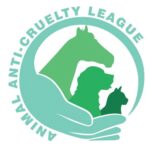In the sphere of animal welfare, it is imperative to distinguish between overt acts of violence and the more insidious forms of cruelty that manifest as neglect. Passive animal cruelty, a term that conveys the gravity of neglect, often flies under the radar yet possesses detrimental implications that can be as damaging, if not more so, than active abuse. This article delves into the complexities of passive cruelty, elucidating its forms, repercussions, and the societal awareness required to combat it.
Defining passive animal cruelty involves understanding neglect in its myriad forms. Unlike active abuse, where harm is inflicted upon an animal intentionally, passive cruelty entails a failure to provide necessary care. This may present itself as insufficient food, lack of veterinary care, inadequate shelter, or neglect of social needs. Although the absence of direct harm may obscure the seriousness of such actions, the impacts on the animal can be profoundly severe and irreversible.
One of the primary forms of passive animal cruelty is starvation. Animals deprived of adequate nutrition experience a slow deterioration of health. Malnutrition not only weakens their bodies but also compromises their immune systems, making them susceptible to diseases. It is vital to recognize that this form of cruelty often goes unnoticed, as the animals may not exhibit immediate signs of distress or suffering. The gradual decline can be misleading, allowing neglectful owners to misinterpret the situation as acceptable.
Another manifestation of passive animal cruelty is the lack of access to essential medical care. Many pets or farm animals endure pain and suffering due to untreated injuries or diseases stemming from a lack of attention to their healthcare needs. This neglect could result from ignorance or apathy on the part of the owner. The animals may live in agony, their conditions worsening silently, fundamentally altering their quality of life. Dishearteningly, this form of neglect is prevalent in households where the owners may genuinely care but are simply uninformed about appropriate animal healthcare.
Inhumane living conditions also epitomize passive cruelty, showcasing stark examples of neglect. Animals kept in filthy environments, where basic hygiene is not maintained, suffer significantly. The accumulation of waste can lead to infections, respiratory diseases, and various other health complications. Furthermore, the psychological toll of living in such environments can be profound. Animals thrive in clean, safe spaces, and the absence of such conditions can lead to anxiety and fearfulness, exacerbating behavioral issues.
Social deprivation constitutes another critical area of concern. Animals are inherently social beings, and when they are isolated or not provided with companionship, the effects can be devastating. Dogs, for example, may exhibit destructive behaviors when left alone for long periods or neglected in their need for interaction. Cats may become withdrawn and hesitant, impacting their emotional health. The need for socialization is not merely a luxury; it is a fundamental requirement for animal well-being.
To comprehend the full spectrum of passive animal cruelty, one must also acknowledge the systemic issues that perpetuate it. Educational deficits about animal care create an environment where neglect is likely to flourish. Often, individuals who neglect animals may lack the resources or knowledge to provide appropriate care. This highlights an urgent need for community education and outreach to inform pet owners about responsible ownership and the necessities of animal care.
Moreover, socioeconomic factors often intersect with instances of passive cruelty. In low-income communities, access to veterinary care and proper resources can be severely limited. Individuals facing financial hardships might prioritize other basic needs over their pets’ welfare, inadvertently leading to neglect. This tragic cycle of poverty and animal neglect calls for societal intervention, advocating for support systems that can alleviate these burdens while promoting animal welfare simultaneously.
Awareness and reporting are paramount in addressing passive animal cruelty. Communities must foster a culture where individuals feel empowered to recognize and report instances of neglect. Many people hesitate to intervene due to uncertainty or the fear of hurting the animal-owner relationship. However, it is crucial to understand that the suffering of animals should always take precedence. Community programs aimed at educating the public about the signs of neglect can pave the way for more responsible pet ownership.
Legislation also plays a pivotal role in combating passive cruelty. Advocating for stricter animal welfare laws and regulations can ensure that neglect is met with appropriate consequences. Governmental policies must reflect the urgency of passive cruelty and promote preventive measures, including educational resources and financial assistance for those struggling to provide for their pets.
Ultimately, combating passive animal cruelty requires a multifaceted approach. Awareness, education, community involvement, and legislative reform are crucial in dismantling the systems that allow neglect to persist. It is not sufficient to condemn active cruelty without equally addressing the insidious nature of passive neglect. By shining a light on this often-overlooked issue, society can pave the way for a future where the well-being of all animals is prioritized. Together, we can strive to eradicate cruelty in all its forms and foster an environment where compassion for animals reigns supreme.








